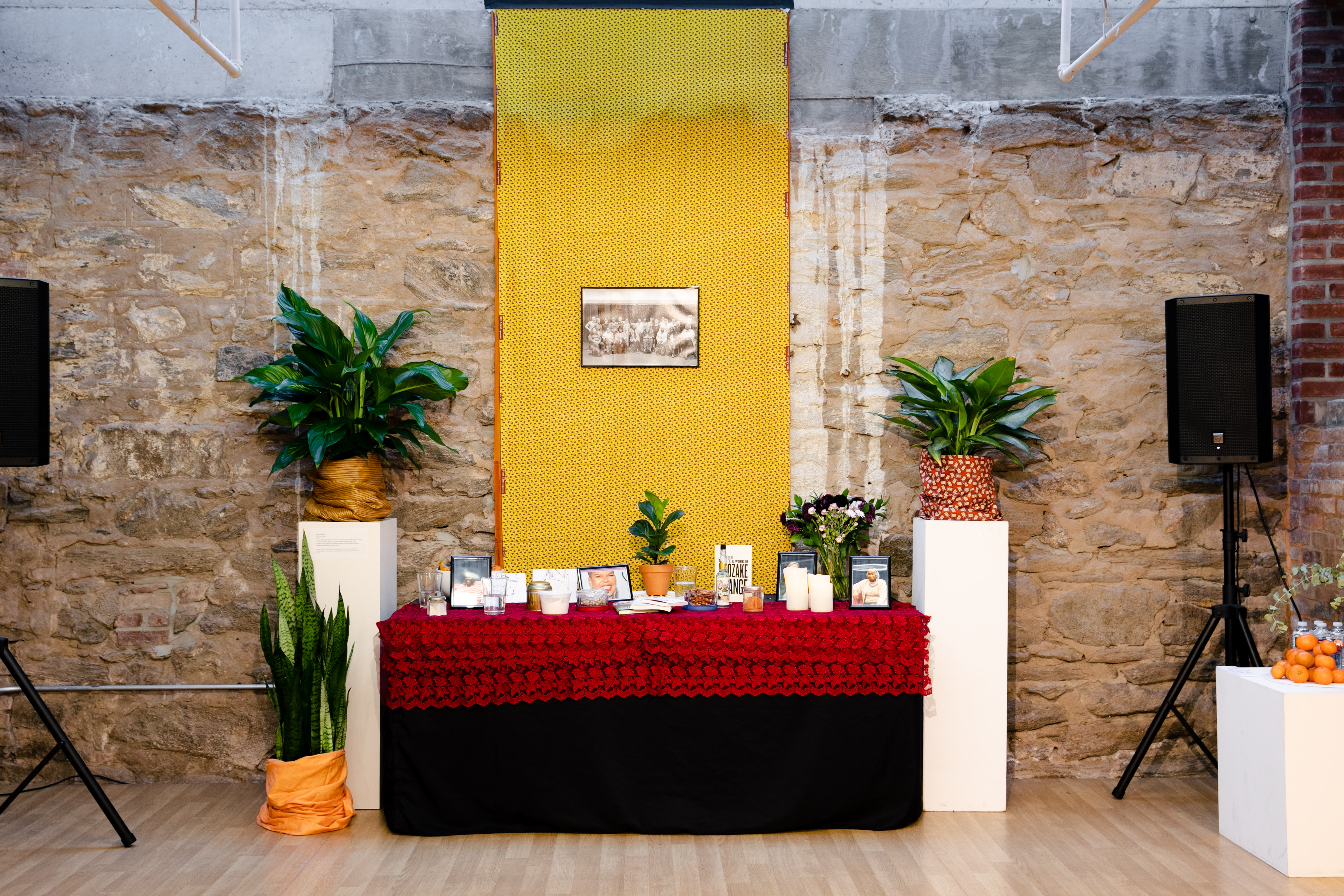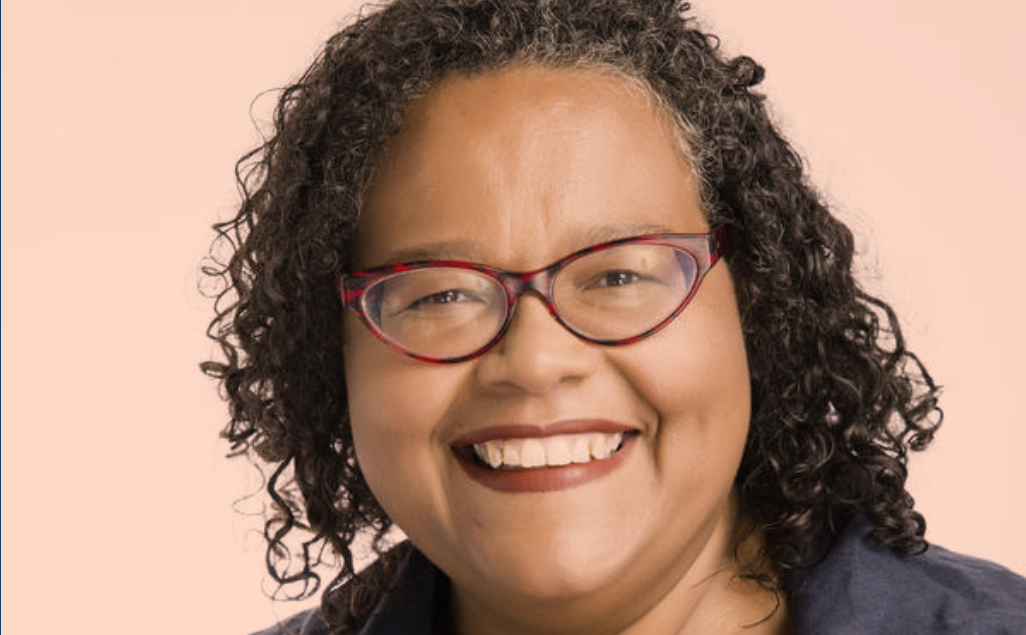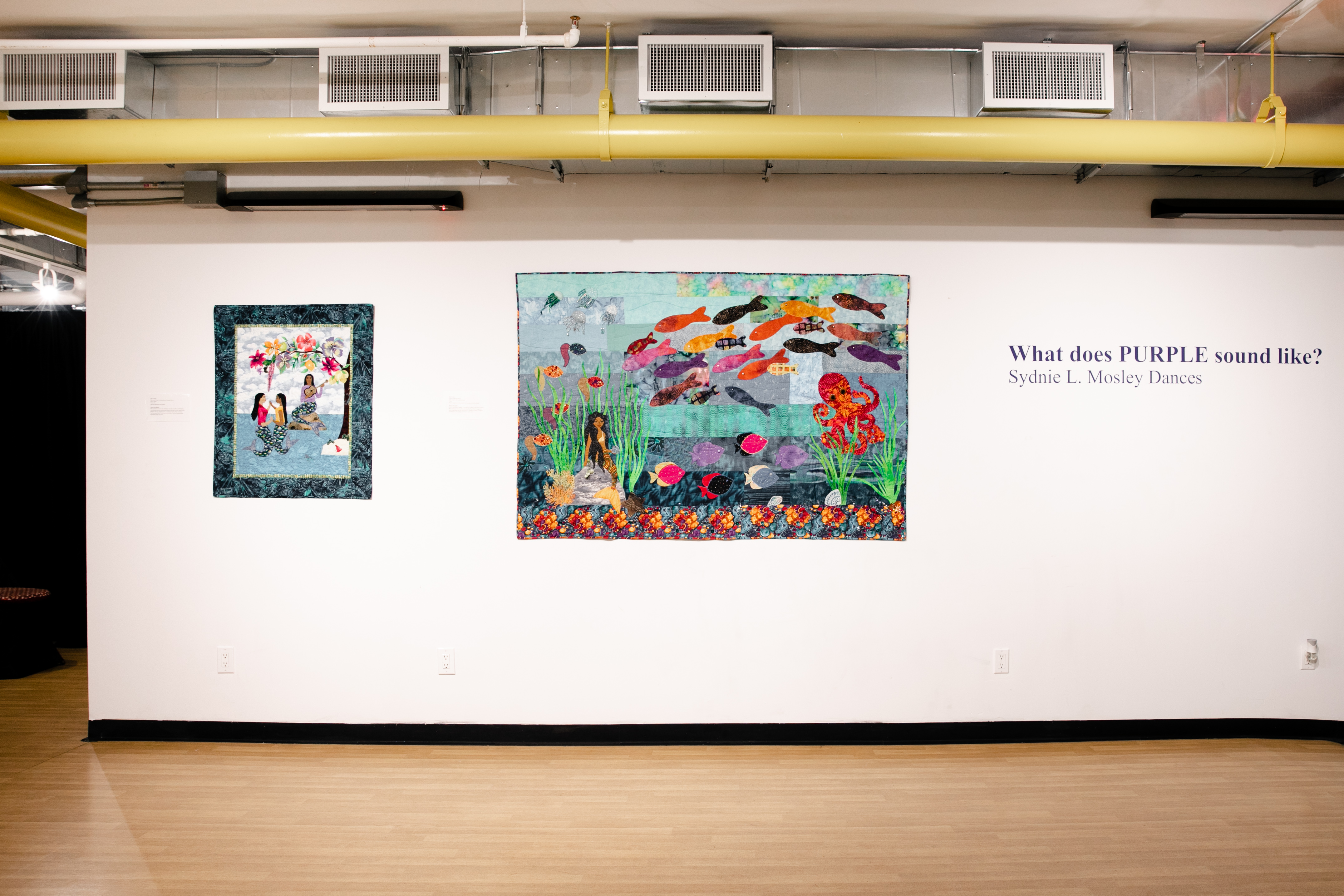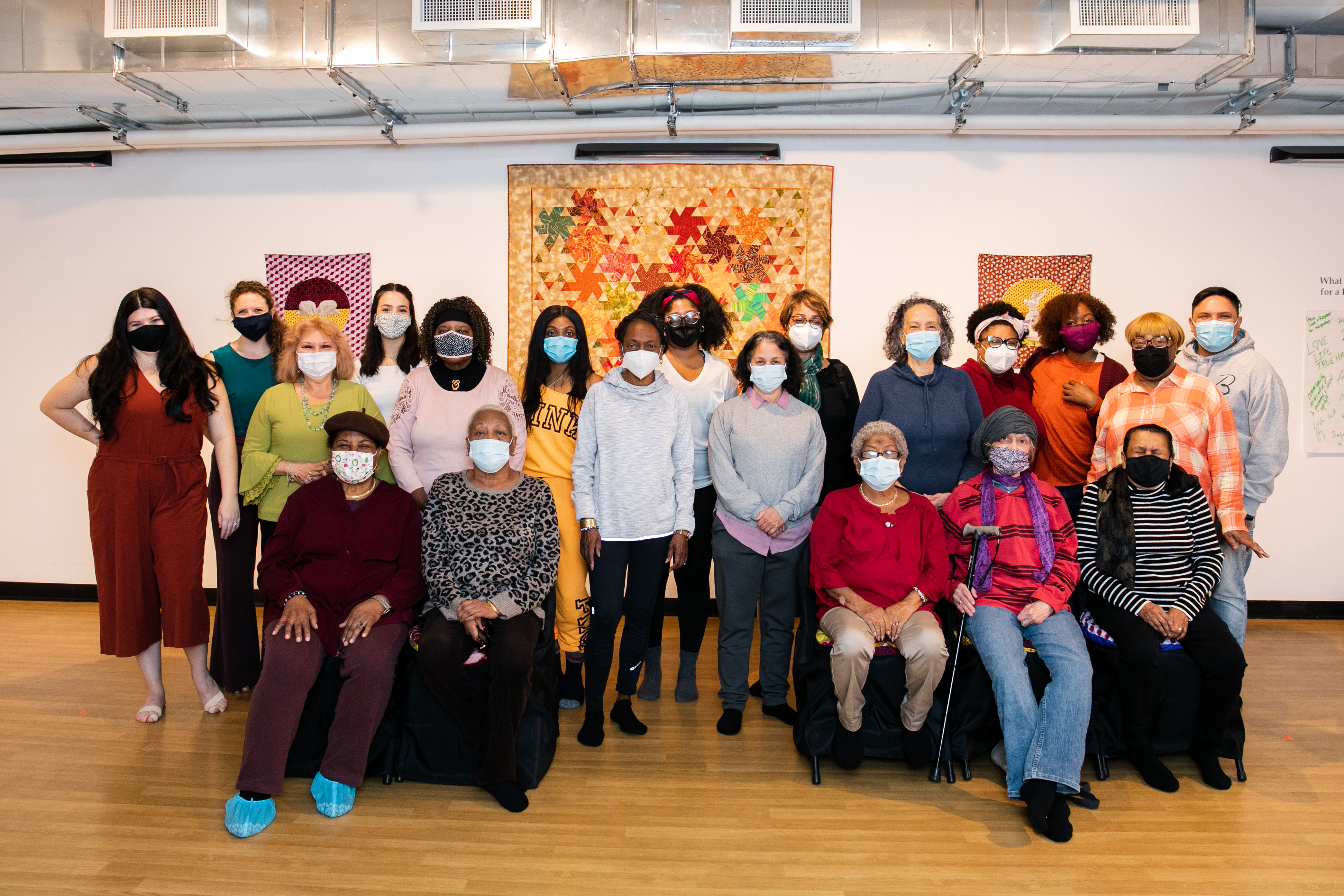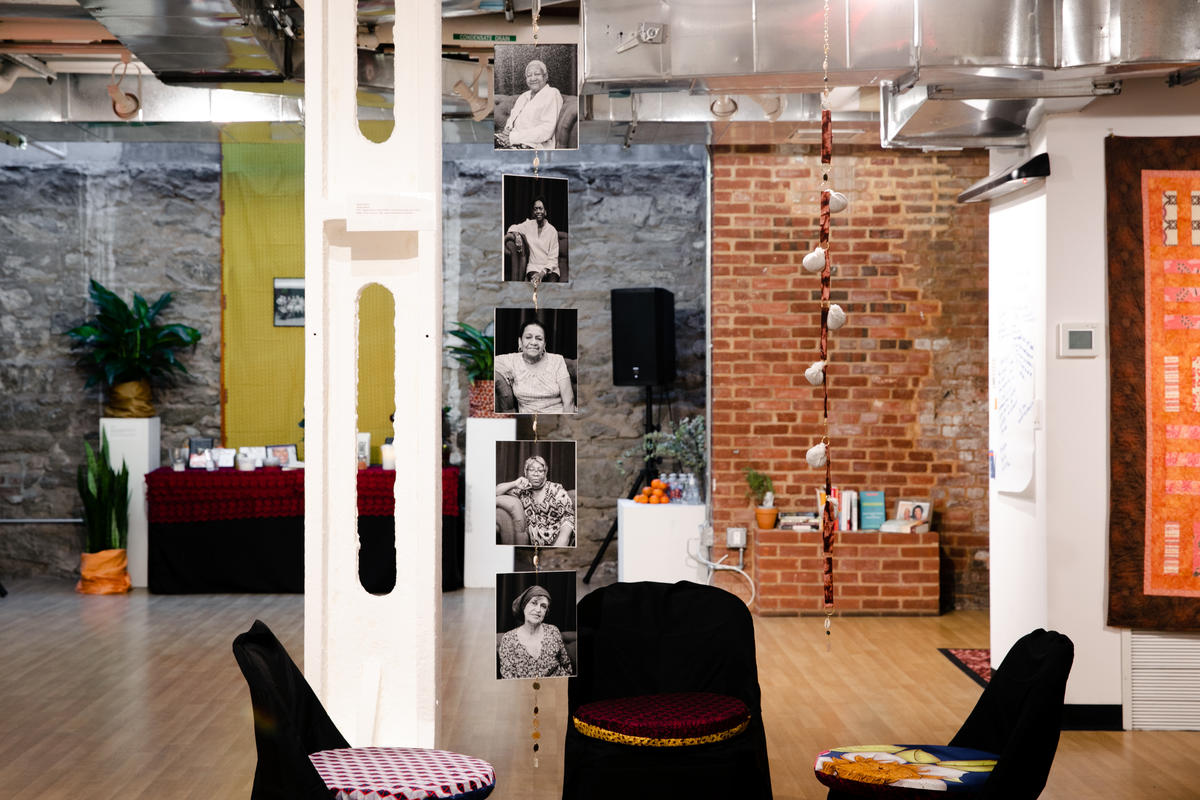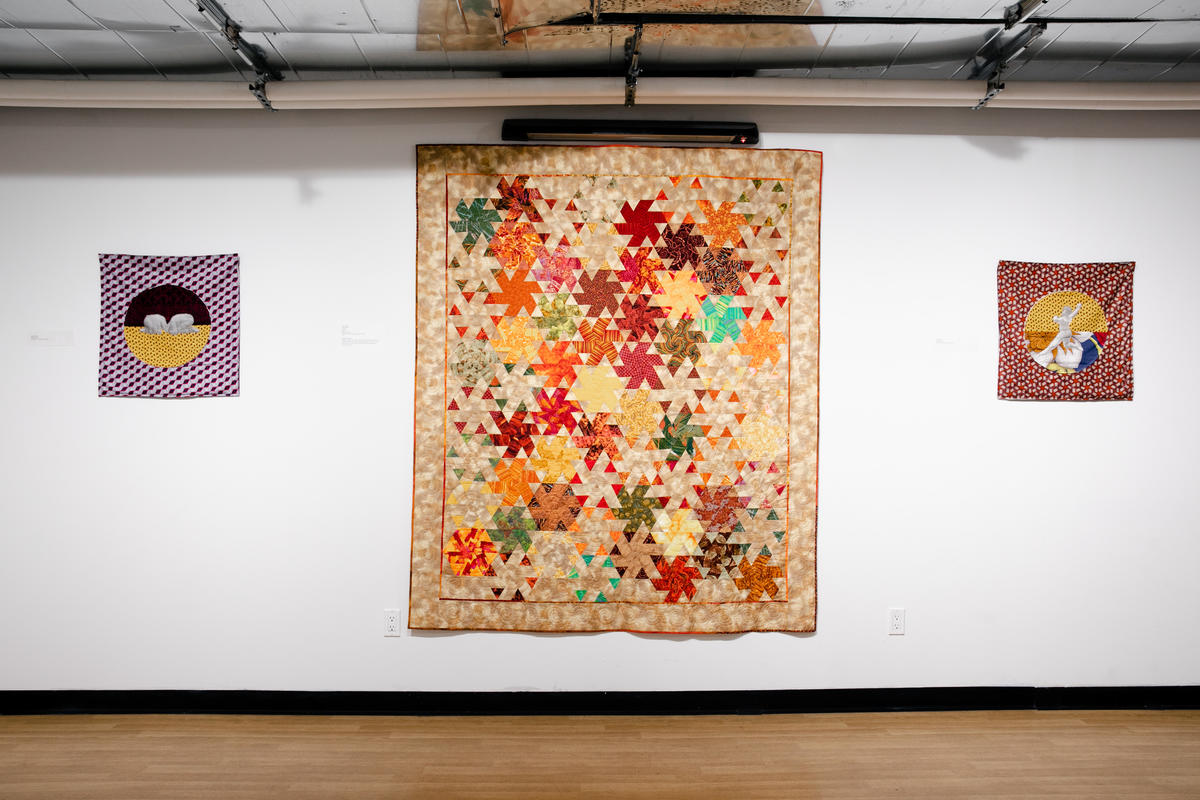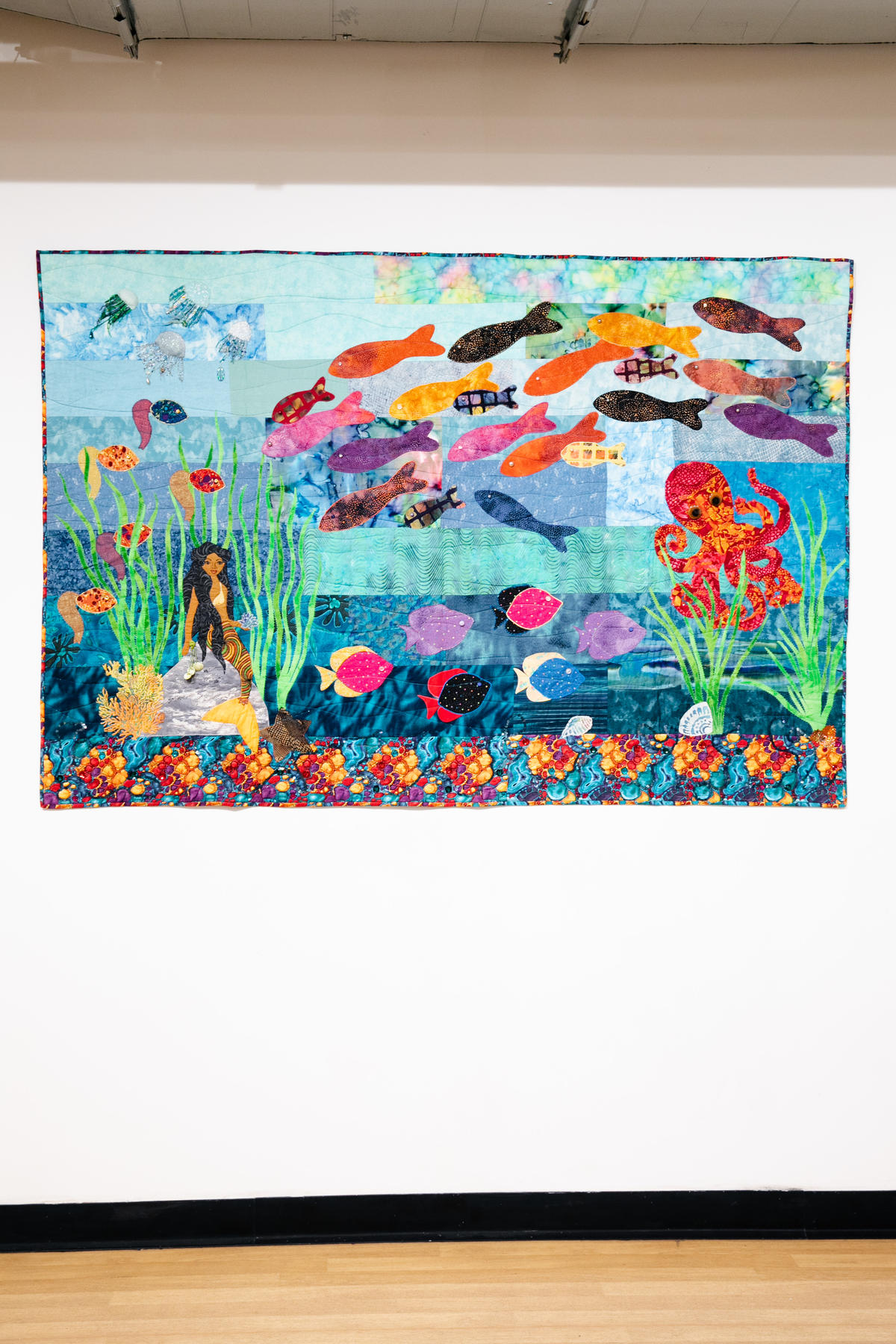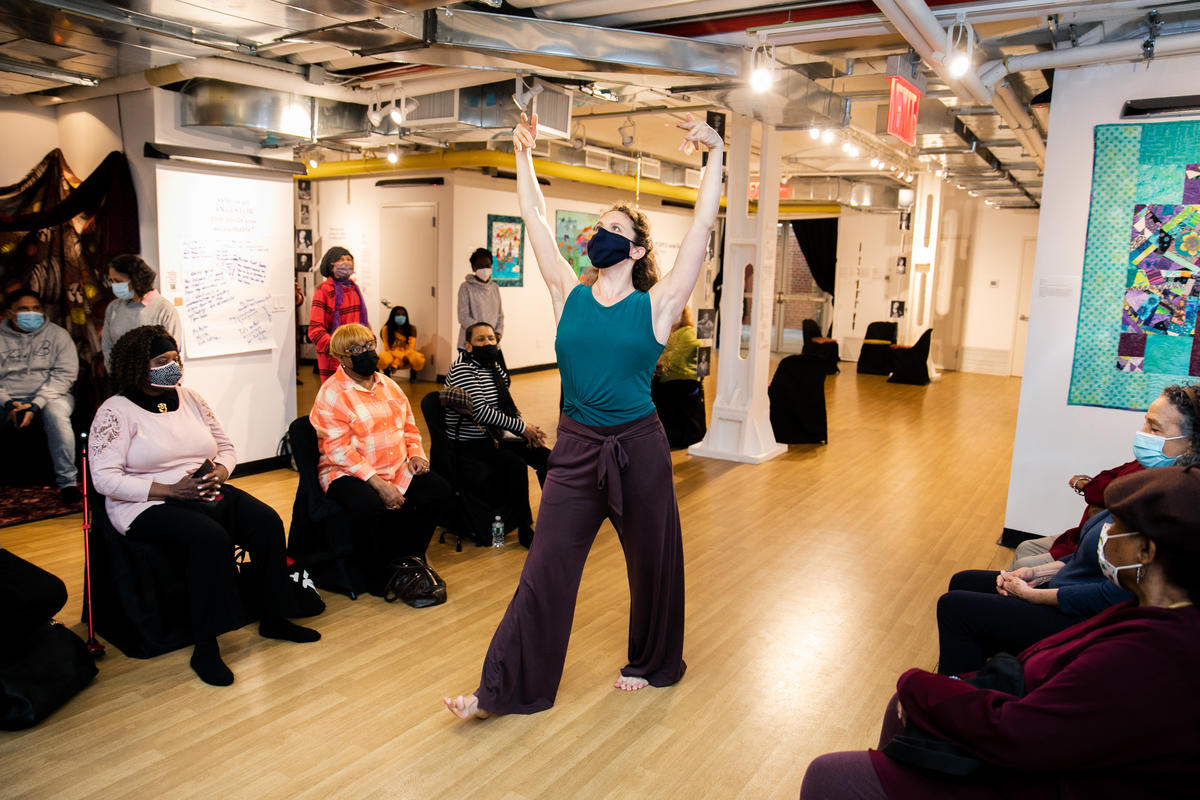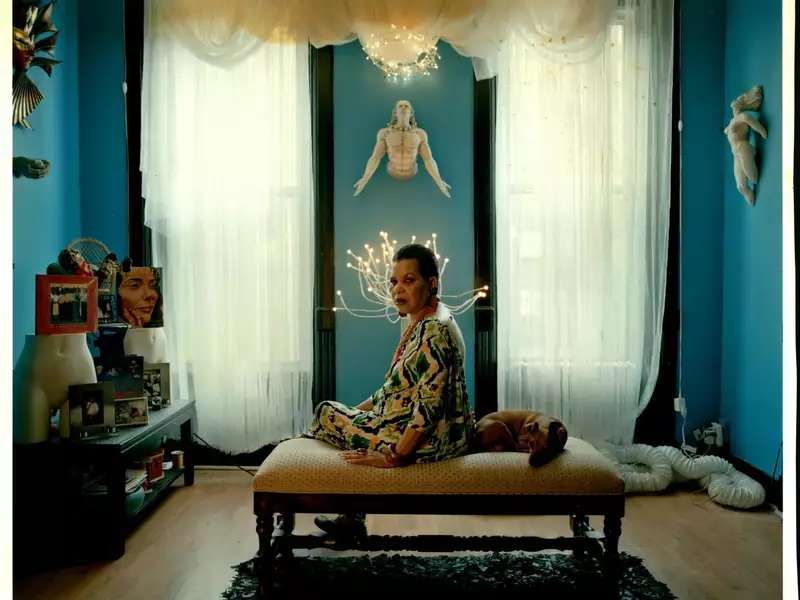Welcome to the PURPLE universe. The brainchild of Sydnie L. Mosley ’07, founding artistic and executive director of the SLMDances dance collective, PURPLE is a space she describes as “a multiproject universe that illuminates the power of deep sisterhood for social change through storytelling and movement.” In addition to being multigenerational, all of the artistic works in the ongoing PURPLE universe are inspired by the genre-defying art of fellow Barnard alumna Ntozake Shange ’70.
The latest addition to the universe, What Does PURPLE Sound Like?, ran through October and November at Hi-ARTS in Manhattan. This interactive dance installation used quilts, music, poetry, color, movement, and memoir to amplify the stories of 14 women who live in the Amsterdam Houses on Manhattan’s Upper West Side, a public housing project located near Lincoln Center that lacks much of that institution’s resources.
By relaying the stories of their lives, these women share strategies of resilience and cultural traditions, describe what their spaces of radical joy look and feel like, and give firsthand insights into the successes and failures of public housing policy.
The PURPLE universe was born after Mosley became a Lincoln Center Education Community Artist in Residence in 2018, tasked with creating a project that connected to the neighboring community and the Amsterdam Houses. As she shaped PURPLE, it also became a collaboration among women with whom she’s been exploring and making art since her undergraduate years at Barnard.
This past November, Mosley and some of the show’s masterminds — Pam Phillips, creator of the Changing the Narrative project and senior program assistant at the Barnard Center for Research on Women (BCRW); Kim F. Hall, Barnard’s Lucyle Hook Professor of English and professor of Africana studies; and music producer and engineer Ebonie Smith ’07 — spent an afternoon on Zoom reflecting on the PURPLE universe and on the power of seeing public policy and scholarship through the lens of art and radical joy. Below is some of what they shared in that conversation:
On the project’s origin and purpose:
Sydnie L. Mosley: We were doing community engagement with older adult women on the Upper West Side and had an intention to do some kind of art project but didn’t know what it was going to be. And then the women said, “Why don’t you capture our oral histories?” I thought, “That’s a really good idea. And I know somebody who’s already captured oral histories of people living in New York City public housing — Pam.”
Pam Phillips: My role is to sit and listen and learn. And I’ve been learning to give these members of the community a voice to speak about their communities in a way that wasn’t being told. In public discourse, it was just so negative. I wanted to give the power back to them. And then Sydnie came in and said, “Let’s amp it up a notch, let’s just be radically joyous.”
When you come into a community and talk to folks where they are, it’s a different way of engaging. So, to go into a public housing community and empower their voices to that level, to show they are as important as any lecturer who claims to be an expert because they are the experts in their stories and experiences.
We can think about our artistic forebears as people in our neighborhoods who have deep and important stories.
Kim F. Hall: Shange’s work came out before Google and Wikipedia. And there are names in her poems, so the dancers were trying to find out who these people were. And Shange was like, “Oh, that’s a person I know from down the street” or “They’re from around the way.” So the other thing related to what Sydnie has done is that this project brings people who have been objects of research and study, it allows us to recognize them as subjects with their own histories who are worthy of making art with and for and about. In the same way that white artists have kind of elevated their predecessors, we can think about our artistic forebears as people in our neighborhoods who have deep and important stories. Pam and her work are central to that purpose.
On the music of the experience:
Ebonie Smith: In terms of what PURPLE sounds like, it sounds like those communities. My role as a music producer and engineer was to curate the sound based on the recorded oral histories. There was so much richness in what they were saying, which became my challenge as an engineer: How do we mine these recordings for the real content and the real core of how these women want to be remembered — and find a solution, because some mentioned they feel voiceless?
I did a little bit of study about urban housing policy and how it has evolved since its inception in the first half of the 20th century. And what you see is a political landscape that affects social economics and that feeds on policy. So this work is inherently political. What often gets lost when you start thinking about urban policy are the voices of how people want their communities transformed. I took much pride in making sure that those voices in the music were front and center.
On the quilts, which were created by Prof. Hall, who has been quilting since age 7:
Hall: In PURPLE, I wanted Sydnie to have a space where people could come together in community, love, and joy. If it wasn’t the pandemic, I would have wanted to give her quilts for people to wrap themselves up with each other and be loving.
Mosley: Shani Peters [co-creator] and I went to Kim’s house to select quilts for the installation. There was a particular color palette: an orange, blue, purple, green. Like the mermaid quilts. I’d been reading another Barnard alum’s work, Undrowned by Alexis Pauline Gumbs ’04. And a lot of this work is also about the integration of breath, water, and what it is to be a Black woman and sustaining your breath, especially in these times. All of that was present as we were choosing quilts.
On what the audience takes from the experience:
Phillips: If I say the words “public housing” to you, instinctively, you’re going to come up with an image in your mind that is oftentimes negative. What I love about what Sydnie has done is that when you walk into that space with those perceptions, you walk out changed. You walk out knowing that these are real human beings. And they have joys and hopes and dreams and desires, just the way anybody else does.
Hall: Sydnie has carefully tried to make this a participatory experience. So you can read, you can dance, there are videos of the women from the community. It’s a feeling of being a part of something.
Listen to the EP of the project, titled The Amsterdam Houses EP, here.
And watch a video of What Does PURPLE Sound Like? below:


